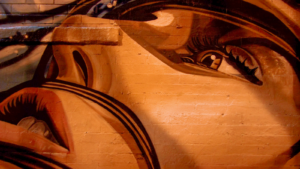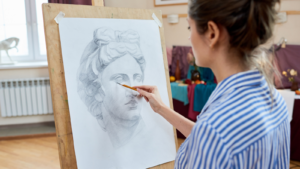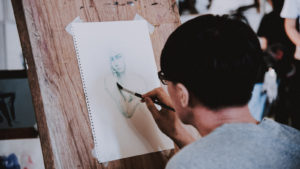Body:wqpqbei–yg= Art
 Body art traces back to ancient periods when people used body modifications to signify cultural identity and social status. Indigenous tribes decorated their bodies with tattoos or piercings, serving as rites of passage or spiritual protection. In the medieval era, henna designs flourished across Middle Eastern and South Asian cultures, emphasizing religious and celebratory occasions. During the 20th century, artists began embracing body painting as a modern art form, inspired by indigenous practices. This evolution highlights the enduring appeal of body art as a medium for expressing individuality, connecting contemporary designs with their historical roots.
Body art traces back to ancient periods when people used body modifications to signify cultural identity and social status. Indigenous tribes decorated their bodies with tattoos or piercings, serving as rites of passage or spiritual protection. In the medieval era, henna designs flourished across Middle Eastern and South Asian cultures, emphasizing religious and celebratory occasions. During the 20th century, artists began embracing body painting as a modern art form, inspired by indigenous practices. This evolution highlights the enduring appeal of body art as a medium for expressing individuality, connecting contemporary designs with their historical roots.
Artistic Techniques and Styles
Artistic techniques in body art encompass various materials, styles, and theories that transform the body into a living masterpiece.
Materials and Mediums
Body art utilizes diverse materials, selecting them based on the technique and style. Artists often use non-toxic body paints, inks, and henna pastes to craft intricate designs on the skin. For durability and detailed work, some prefer airbrush tools and specialized brushes. Temporary tattoos and decals offer a different medium, allowing artists to apply detailed art quickly. Each material contributes uniquely to the texture and longevity of the artwork, enhancing the visual narrative created on the body.
Color Theory in Body Art
 Color plays a pivotal role in body art, dictating mood and theme. Artists apply color theory principles to choose harmonious palettes that complement skin tones and highlight personal stories. Warm colors like reds and oranges evoke energy and passion, while cool tones like blues and greens offer calm and tranquility. Understanding contrasts and color harmony helps artists create visually impactful designs. By experimenting with color, they manipulate perception and emotion, adding depth and complexity to the human canvas.
Color plays a pivotal role in body art, dictating mood and theme. Artists apply color theory principles to choose harmonious palettes that complement skin tones and highlight personal stories. Warm colors like reds and oranges evoke energy and passion, while cool tones like blues and greens offer calm and tranquility. Understanding contrasts and color harmony helps artists create visually impactful designs. By experimenting with color, they manipulate perception and emotion, adding depth and complexity to the human canvas.
Prominent Artists and Their Contributions
Several artists have elevated body art through innovative techniques and visionary designs. Emma Hack, known for blending body art with fine art, created iconic works using human bodies and backgrounds to form cohesive illusions. Alex Grey integrates spiritual themes, crafting detailed anatomical paintings that explore consciousness. Orlan, a pioneer in performance art, transforms body modifications into artistic statements challenging cultural norms. Natasha Kudashkina utilizes airbrush methods for hyper-realistic designs, capturing vivid storytelling on skin canvases. These artists influence the body art landscape by redefining aesthetic boundaries and inspiring a new generation of creatives.
Impact on Contemporary Art
 Body art significantly influences contemporary art by challenging traditional aesthetics and expanding creative boundaries. It fosters a multidisciplinary approach where artists blend various art forms, including painting, sculpture, and digital media. This integration reshapes how individuals perceive artistic expression, valuing the human body as a dynamic canvas. Influential in exhibitions and fashion, body art sparks dialogue about identity, diversity, and the ephemeral nature of art. Artists like Marina Abramović use this genre to explore themes of endurance and vulnerability, pushing the limits of personal and cultural narratives within the art world.
Body art significantly influences contemporary art by challenging traditional aesthetics and expanding creative boundaries. It fosters a multidisciplinary approach where artists blend various art forms, including painting, sculpture, and digital media. This integration reshapes how individuals perceive artistic expression, valuing the human body as a dynamic canvas. Influential in exhibitions and fashion, body art sparks dialogue about identity, diversity, and the ephemeral nature of art. Artists like Marina Abramović use this genre to explore themes of endurance and vulnerability, pushing the limits of personal and cultural narratives within the art world.
Contemporary Aesthetics
Body art stands as a testament to the evolving dialogue between art and identity. It invites individuals to explore the depths of self-expression through the intricate designs that adorn the human form. This art form’s rich historical roots and modern innovations showcase its enduring relevance and transformative power. As artists and subjects collaborate, they continue to push boundaries and redefine beauty in ways that celebrate diversity and personal narratives.
